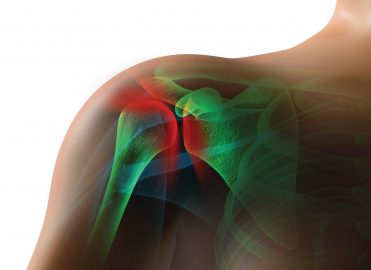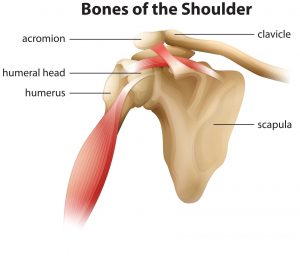How Do You Code Icd 10 Cm Arthroscopic Biceps Tendon Debridement Open Rotator Cuff Repair

Coding for shoulder procedures is evolving; proceed up to date with the changes.
Coding for shoulder procedures has changed significantly since 2004. If you oasis't stayed current, chances are y'all are under- or over-coding. To brand certain you recoup proper reimbursement, let's address CPT® codes 29821, 29822, 29823, 29824, 29826, 29827, 29828, 29806, and 29807, besides as arthroscopic superior capsular reconstruction (ASCR).

Codes 29821-29823
Three shoulder codes, in particular, cause a lot of confusion:
29821 Arthroscopy, shoulder, surgical; synovectomy, consummate
29822 debridement, limited
29823 debridement, extensive
The American Medical Association (AMA) and the American Academy of Orthopaedic Surgeons (AAOS) agree that, to written report 29821, the "entire intra-articular synovium" must be removed (CPT® Assistant, June 2022, and AAOS Bulletin, April 2006).
Regarding the difference betwixt 29822 and 29823, most payers follow the Apr 2006 AAOS Message guidelines, which land extensive debridement includes debridement of multiple soft structures, multiple hard structures, or a combination of both. Here are three examples of all-encompassing debridement:
- A chondroplasty and a debridement of the labrum (a combination of hard and soft structures)
- An abrasion arthroplasty (microfracturing/drilling downwardly to bleeding bone) and a biceps tenotomy (a combination of hard and soft structures) (come across CPT® Assistant, September 2022)
- Debridement of a biceps tendon and a fractional thickness rotator gage tear (multiple soft structures)
The Dec 2022 CPT® Assistant further clarifies that an all-encompassing debridement "additionally includes removal of osteochondral and/or chondral loose bodies, biceps tendon and rotator gage debridement, and abrasion arthroplasty."
Practice not separately study the debridement if the surgeon too repairs the debrided structures. As well, most payers consider the labrum to exist one structure, and practice not divide it into upper or lower portions for debridement.
As of July i, 2022, (and equally further clarified in the updated National Correct Coding Initiative (NCCI) guidelines constructive Jan. 1, 2022), 29823 may be reported separately with 29827 Arthroscopy, shoulder, surgical; with rotator cuff repair, 29828 Arthroscopy, shoulder, surgical; biceps tenodesis, and 29824 Arthroscopy, shoulder, surgical; distal claviculectomy including distal articular surface (Mumford procedure).
With few exceptions, NCCI edits packet arthroscopic debridement into all arthroscopic surgical codes for the joint being worked on. For case, when performing a superior labral tear from inductive to posterior (SLAP) repair (29807 Arthroscopy, shoulder, surgical; repair of SLAP lesion) and a debridement of a rotator cuff tear and biceps tear (29823), you cannot separately report 29823, per NCCI guidelines, because the debridement is considered inclusive (unless it's for the reverse shoulder; meet NCCI guidelines, chapter four).
Bonus tip: For arthroscopic rotator gage repair with debridement of the biceps tendon and debridement of the labrum, forth with a bony acromioplasty, you may report 29827, +29826 Arthroscopy, shoulder, surgical; decompression of subacromial space with partial acromioplasty, with coracoacromial ligament (ie, arch) release, when performed (List separately in improver to code for master process), and 29823 because the bundling edit is removed from 29827 and 29823.
Codes 29824 and 29826
When reporting 29824, documentation should support that the entire distal end of the clavicle was resected. Neither CPT® nor the Centers for Medicare & Medicaid Services (CMS) state how much bone must be removed to be considered the "entire" distal end. The AMA provided a clinical example when 29824 was first developed — but it was strictly an example, and not all-inclusive of the requirements for reporting. For years, AAOS referenced size in their CodeX and Global Service Data books to be sure surgeons were not reporting 29824 for removing only a spur. Since 2010, however, all "size" references were deleted from AAOS publications.
Many offices have stopped reporting 29824 unless in that location is a documented reference to size, but this is a mistake. If there is a question as to whether a procedure was washed, query the surgeon. Some payers have placed size references in their own internal policies, but that is a payer-contracted issue.
CPT® fabricated 29826 an addition lawmaking several years ago; still, some payers — especially workers' compensation carriers — have retained 29826 every bit a full-value lawmaking. You may want to double-check this with your contracted payers, also. Per CPT®, +29826 may be reported merely with other shoulder arthroscopy codes. Medicare agrees, and allows +29826 to exist reported with all other shoulder arthroscopy codes, including 29822 and 29823. Be sure there is clear documentation that bony piece of work was performed on the acromion to support +29826.
Many payers are now requiring a "bony tool" to be referenced in the torso of the report for +29826 to be paid. Documentation of converting the acromion from a type iii to a type 1 can also be benign to support this code.
If only a subacromial bursectomy is performed, without any bone resection, report a debridement, non +29826.
Many surgeons continue to perform arthroscopic subacromial decompression alone, or with open shoulder procedures. The AAOS, the Arthroscopy Association of North America, and the AMA propose to written report this scenario with an arthroscopic debridement lawmaking, 29822 (soft tissue only) or 29823 (bone and soft tissue). If washed with an open rotator gage repair (23410/23412), many payers do not let separate reimbursement for acromioplasty, regardless of approach with an open or mini-open up rotator cuff repair. Cheque payer policy (and go something in writing) before billing acromioplasty as a debridement code.
Codes 29827 and 29828
Only one rotator cuff repair code is allowed, per shoulder. Whether one or all four components that make upwards the rotator gage (supraspinatus, infraspinatus, teres minor, and subscapularis (SITS)) are repaired in a single shoulder, report a single unit of 29827.
If the surgeon begins a rotator cuff repair arthroscopically, only converts to a mini-open up approach to end, report simply the appropriate "open" CPT® lawmaking (23410 Repair of ruptured musculotendinous cuff (eg, rotator cuff) open up; acute or 23412 Repair of ruptured musculotendinous cuff (eg, rotator cuff) open up; chronic). You lot may study 23410/23412 with modifier 22 Unusual procedural service appended to account for the arthroscopic work done prior to the open portion. Exercise not written report both the open and arthroscopic codes because the work was in the same anatomic location and same session, which does not support the definition of modifier 59 Distinct procedural service.
ASCR is a newer arthroscopic process for an irreparable rotator cuff. This procedure involves placement of a fascia lata or similar graft that is attached to the top of the glenoid and greater tuberosity of the humerus. This is not a side to side or reattachment of the gage tissue; it involves placement of graft material, which makes information technology a reconstruction, not a repair. There is no CPT® lawmaking to draw this process. Per the AMA Coding Committee, CPT® guidelines, and April 2022 CPT® Banana, ASCR may be reported as an unlisted procedure (29999 Unlisted procedure, arthroscopy). Information technology'south inappropriate to report ASCR using 29827 (either with or without modifier 22).
Code 29828 Arthroscopy, shoulder, surgical; biceps tenodesis represents an arthroscopic biceps tenodesis. A mini-open biceps tenodesis should exist coded as open with 23430 Tenodesis of long tendon of biceps.
Prior to biceps tenodesis, the surgeon often debrides and cuts the biceps (tenotomy). This is inclusive to the tenodesis, so do not report information technology separately.
Biceps tenodesis, or transferring the attachment of the biceps to the humerus (23430/29828), may be reported separately, according to CPT® Assistant (July 2022), and is non part of a normal rotator gage repair.
Codes 29806 and 29807
When 29806 Arthroscopy, shoulder, surgical; capsulorrhaphy and 29807 were developed, William Beach, MD, of the AAOS Coding Committee stated the goal was to separate the labrum in one-half (29807 upper half, 29806 lower half). Ideally, the surgeon documents where on the labrum the work was performed; referencing "clock" positions is the best form of documentation. For example, "The patient had a labrum tear from xi o'clock to 2 o'clock, with tacks/anchors/etc. placed at 11, 1, and 2 o'clock." This documentation indicates the surgeon worked on the upper half of the labrum code, and supports 29807.
NCCI now bundles codes 29806 and 29807, and only allows one per shoulder, per session. Per the AAOS Bulletin, for top and bottom repairs of the labrum at the aforementioned session, suspend modifier 22 to the code to admit the additional work performed. Check with private payers, also as workers' compensation carriers, to run into if they allow either 29806 or 29807 on the same shoulder.
NCCI also bundles 29806 and 29827, and will but let one of the codes per shoulder, per session.
To indicate procedures on different shoulders, yous may use modifiers LT Left side and RT Correct side. You can read virtually this result under NCCI guidelines, chapter four.
Remplissage (meaning "to fill in") is becoming more than common for a posterior Colina-Sachs lesion following an anterior dislocation. The surgeon fills in the lesion by capsulodesis and a tenodesis of the infraspinatus. The remplissage is considered inclusive to the Bankhart, co-ordinate to the AAOS; even so, American Hospital Association's (AHA) Coding Dispensary for HCPCS (tertiary quarter, 2022) advises reporting both the capsulorrhaphy (29806) and an unlisted arthroscopy code (29999) for the remplissage process. This volition come down to payer policy.
Keep Upward with Updates
Coders, billers, and surgeons must stay up to date with information from official sources such as the AMA/CPT®, CMS, and specialty societies such as AAOS. Check your contracted payers' policies quarterly to come across if they accept changed or updated their requirements.
Resources
CPT® Assistant, 2022, July 2022, Dec 2022, Apr 2022
AAOS Message, Apr 2006
NCCI guidelines, affiliate 4: www.cms.gov/Medicare/Coding/NationalCorrectCodInitEd/Downloads/2017-NCCI-Policy-Manual.goose egg
AHA Coding Dispensary for HCPCS, tertiary quarter, 2022
Co-written by Ruby Woodward and Margie Scalley Vaught
Margie Scalley Vaught, CPC, COC, CPC-I, CCS-P, PCE, MCS-P, ACS-EM, ACS-OR, has over 30+ years of experience in the healthcare arena, with 25 of those years in orthopedics. She served as an AAPC National Advisory Board member for over 3 years. From 1998-2014, Vaught has been providing consulting services to CodeCorrect.com/Medassets.com. She also contributes and writes articles for the AAOS Message and other journals. Vaught is a member of the Olympia, Wash., local chapter.
- Author
- Recent Posts
![]()
How Do You Code Icd 10 Cm Arthroscopic Biceps Tendon Debridement Open Rotator Cuff Repair,
Source: https://www.aapc.com/blog/39114-stay-current-when-reporting-shoulder-procedures/
Posted by: davisbronge1978.blogspot.com


0 Response to "How Do You Code Icd 10 Cm Arthroscopic Biceps Tendon Debridement Open Rotator Cuff Repair"
Post a Comment